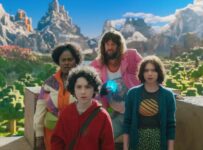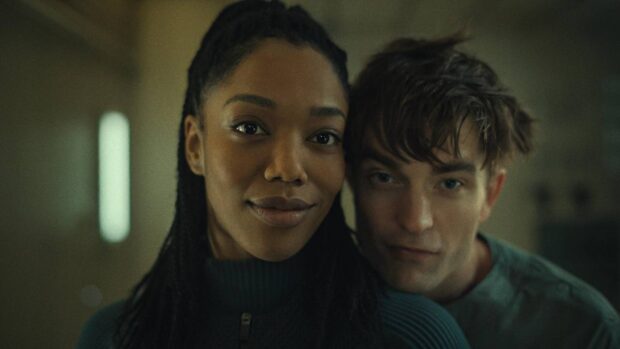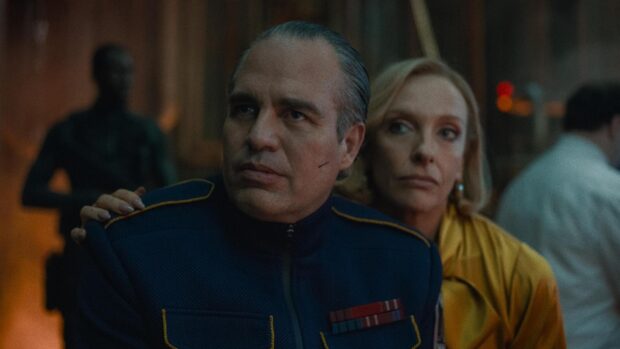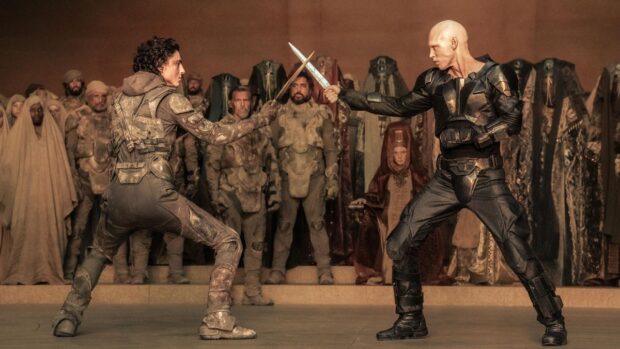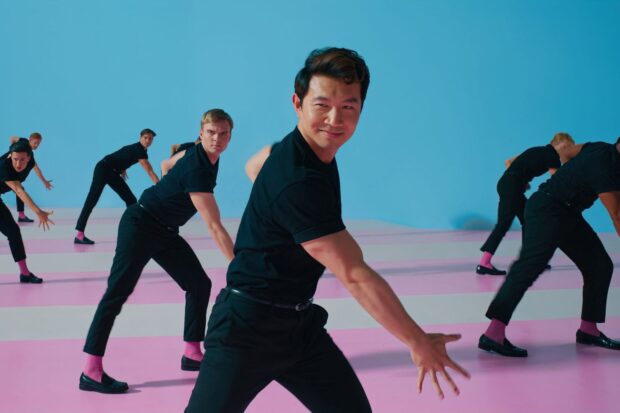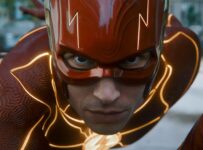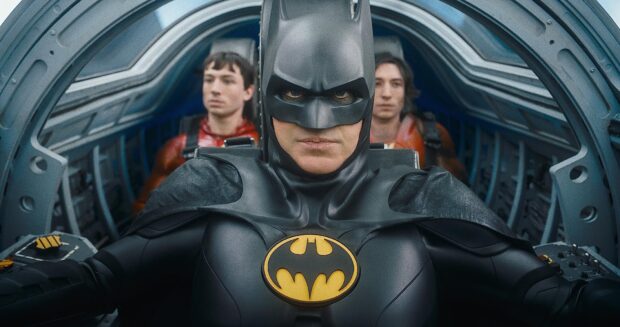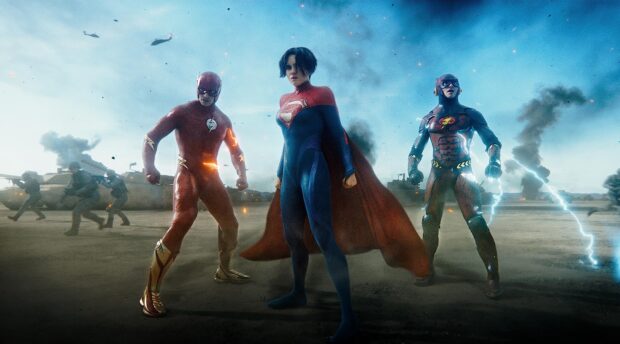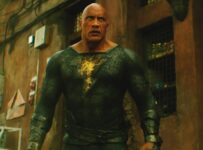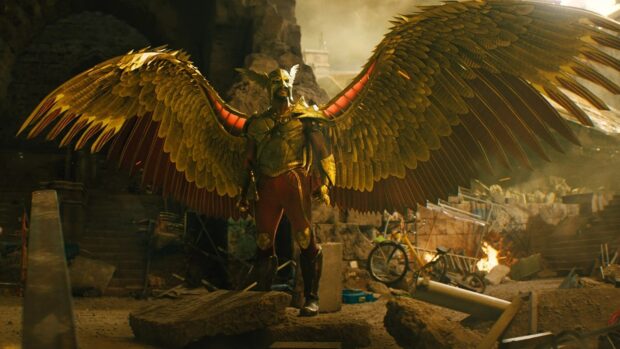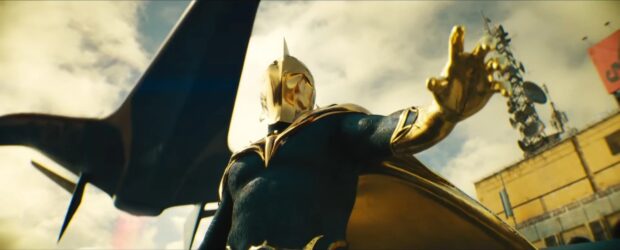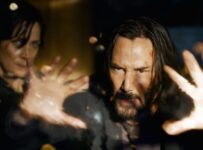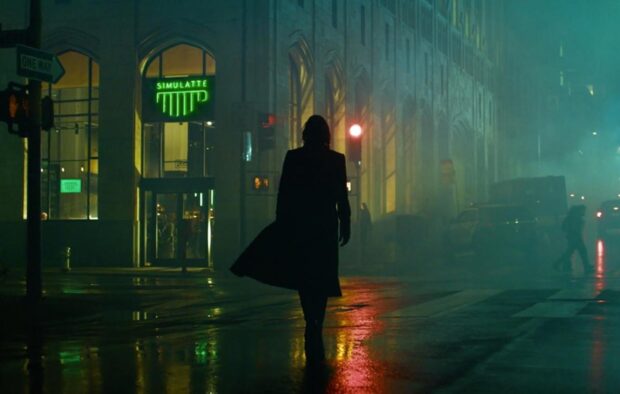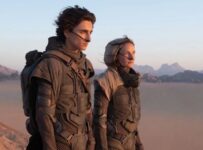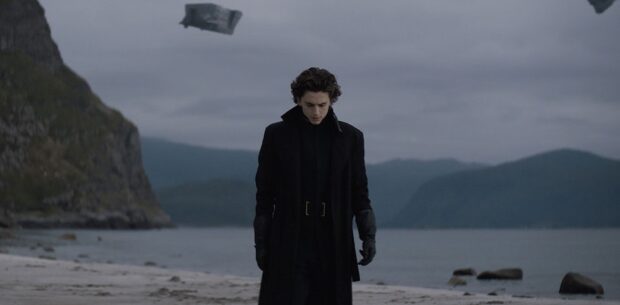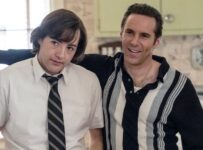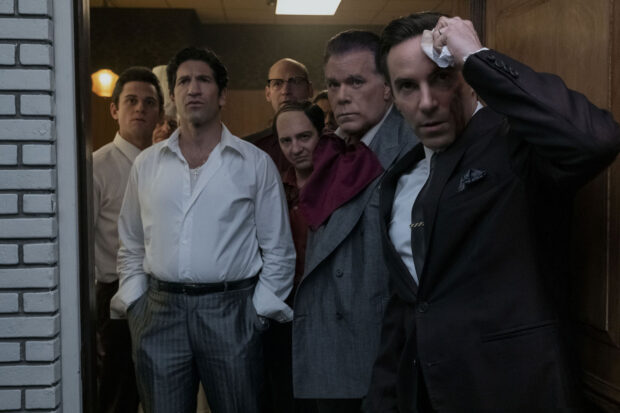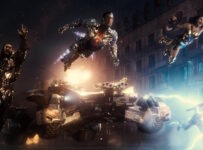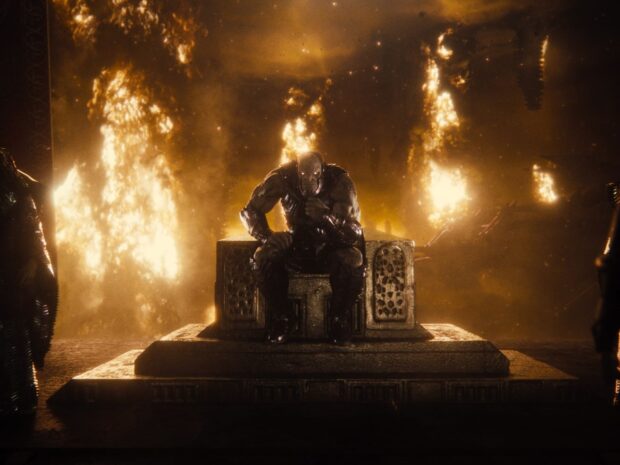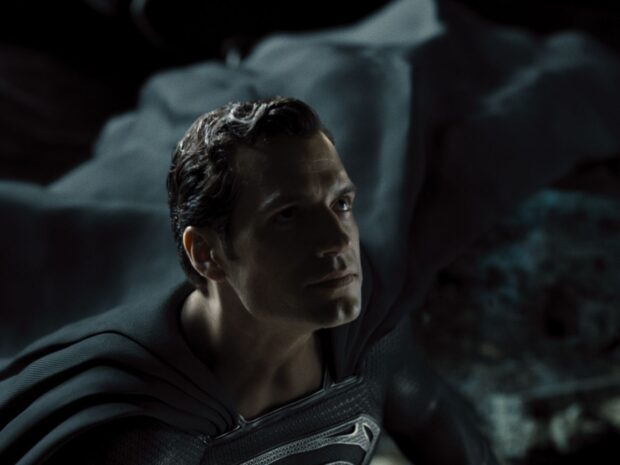The lesson we should have taken from Barbie—beyond its critique of societal expectations and perfectionism—is that big-budget films about female empowerment resonate with audiences. Yet the counters of beans have instead fixated on the value of co-branding a film with an existing product, sidestepping the messy business of having to explain a new concept to prospective viewers.
Which brings us to A MINECRAFT MOVIE. By the time the story proper kicks off, we’ve already had two expository voiceovers laying out the rules of the world we’re about to enter. Taking a leaf from the Jumanji playbook, we see Steve (Jack Black) pulled into the cube-shaped Overworld after discovering a mysterious glowing orb. He builds a wonderland of his own imagination—until the evil Malgosha (voiced by Rachel House) sets her sights on the orb for her own devious purposes.
Where the five (count ’em) credited writers take this next is fairly predictable. After introducing us to a quirky town built around a chip factory—about the only place where Napoleon Dynamite director Jared Hess gets to showcase his offbeat humour—we follow creative kid Henry (Sebastian Hansen) through the portal to the Overworld. Along for the ride are his guardian and sister Natalie (Emma Myers), Dawn (Danielle Brooks), and Garrett “The Garbage Man” Garrison (Jason Momoa), a former ’80s video game champion hopelessly stuck in the past.

The traditional problem with these kinds of films is that they have to play within the specific parameters of the brand’s world. Minecraft, much like LEGO, has the minor advantage of encouraging open play and imaginative exploration. Yet with that comes the challenge, as director Hess once put it, of how to “adapt something that doesn’t have a story.”
Hess’ film has a story—it’s just wholly subservient to the form. Where The LEGO Movie gleefully broke as many rules as it laid out, here he’s forced to tick off familiar totems rather than develop the characters: the fried chicken, the zombies, the stash, the diamond mines, and so on. Other elements are simply abandoned, perhaps assuming the target audience wouldn’t notice or care.
Natalie and Dawn are sidelined for long stretches, seemingly just to make room for Black’s comedy dance routines or his double-act with Momoa. Meanwhile, an entire romantic subplot between Henry’s vice principal and a cube-shaped villager who wandered into the real world serves no purpose—except to remind us that Jennifer Coolidge is a precious natural resource that shouldn’t be squandered on a throwaway role.
All other characters are computer generated, keeping with the blocky source material. The brightly coloured background gives some visual appeal, and stays authentic to the game’s origins, even if the tactile nature of the textured mapped pig flesh is somewhat unnerving. As such, the voice acting is key, and while it’s always great to see Rachel House’s name in the credits, here it just feels like a first pass recording.
A MINECRAFT MOVIE is a frustrating enterprise because it’s so close to being something more. There are genuinely funny moments, especially when the film plays with the quirks of the real world (which, honestly, could have been a whole movie on its own). At the screening event, one young fan, surrounded by McHappy Meals and giant recreations of blocks, was heard to remark, “I think I’ve died and gone to heaven.” And maybe that’s the lesson Hollywood really took from Barbie—that brand loyalty will always win out in the end.
2025 | USA | DIRECTOR: Jared Hess | WRITERS: Chris Bowman, Hubbel Palmer, Neil Widener, Gavin James, Chris Galletta | CAST: Jason Momoa, Jack Black, Danielle Brooks, Emma Myers, Sebastian Hansen | DISTRIBUTOR: Warner Bros. Pictures | RUNNING TIME: 100 minutes | RELEASE DATE: 3 April 2025 (Australia), 4 April 2025 (USA)
